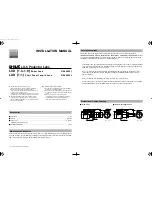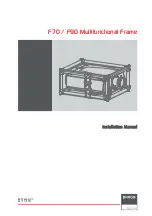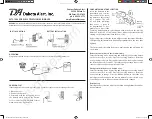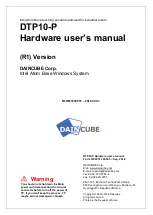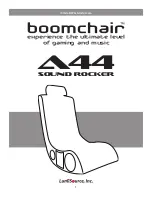
24
DO NOT TIP THE TUBE SO THAT THE COLOURED END IS DOWN AS THIS WILL CAUSE A
SPILLAGE.
3. The unit has been designed to conform to international safety specifications and is fitted with an
over-temperature cut-out. If, for any reason, the temperature rises above a safe level for the
instrument, the over temperature protection cuts out the heater, but the tubes continue to rotate.
Check the reason for the cut out and, if there is no obvious cause, turn the unit off, allow it to cool
then turn it on again. The cut-out should reset itself. If it does not re-set then the unit needs repair.
4. If the Controller displays 'Err', the thermistor has broken or become disconnected and the unit will
cool down automatically.
USER MAINTENANCE
O ring seals on the FHB16 hybridisation tubes
The O ring seals on the large 80mm diameter hybridisation tubes must be checked regularly and
replaced before a leak occurs. Each tube is provided with 6 spare O rings and further O rings can be
obtained from Antylia Scientific Ltd. or your Cole-Parmer dealer.
Hybridisation tubes
The hybridisation tubes must be checked regularly and replaced if any damage occurs. Any damage
to the ends of the tubes can cause them to leak or break when the end caps are inserted. Further
tubes can be obtained from Antylia Scientific Ltd. or your Cole-Parmer dealer.
Cleaning your
Hybridisation Oven
Before cleaning your unit ALWAYS disconnect from the power supply and allow to cool.
You can clean the case of the
Hybridisation Oven
with a cloth dampened in soapy water. No part
of the unit should be immersed in solvents. Do not use acetone or abrasive cleaners.
DO NOT USE ETHANOL OR METHYLATED SPIRITS ON THE ACRYLIC DOOR; these may make
the acrylic go cloudy.
Before using any cleaning or decontamination method except those recommended in this manual,
the responsible body should check with Antylia Scientific Ltd. that the proposed method will not
damage the equipment.
If you spill the fluid
Because of the nature of operation of the
Hybridisation Oven
, the complete inside must be
cleaned if a spillage does occur. This is to remove any airborne particles which may have been
blown around the system and to guarantee full operator safety.
Switch the
Hybridisation Oven
off and disconnect it from the power supply. Follow this sequence of
operations when the
Hybridisation Oven
has been allowed to cool below at least 50°C:
•
Remove all glassware from the
Hybridisation Oven
.
•
Remove the plastic drip tray.
•
Clean all surfaces of the inner chamber using a suitable cleaning and decontaminating
solution. Be careful of the drive shafts.
Cleaning and decontamination materials recommended by Antylia Scientific include:
•
Lipsol®
•
Decon® 90
•
Neutracon®
•
Other mild detergent






















